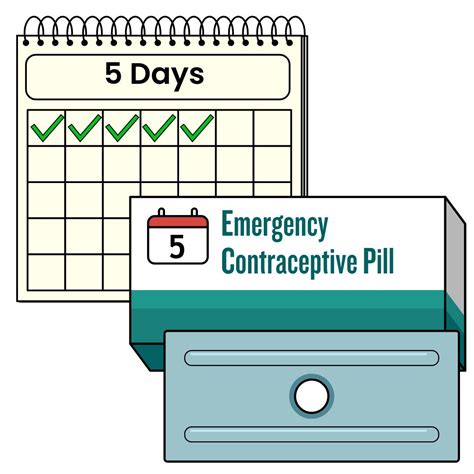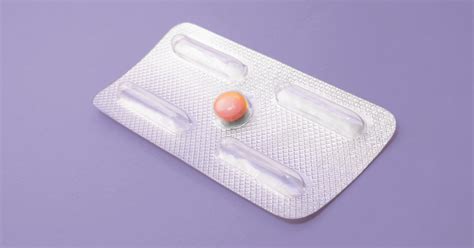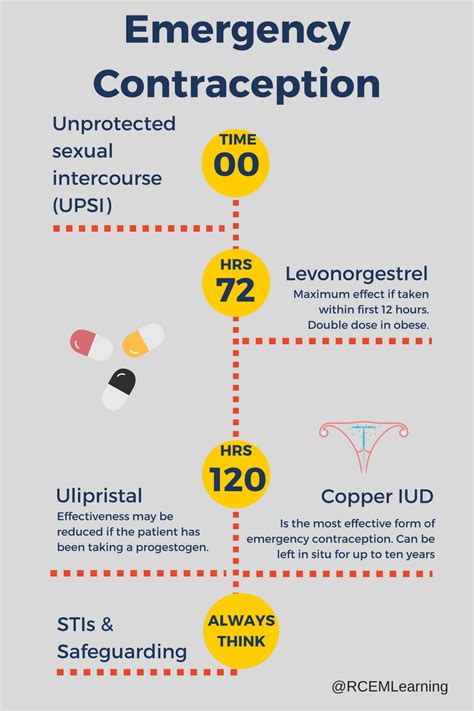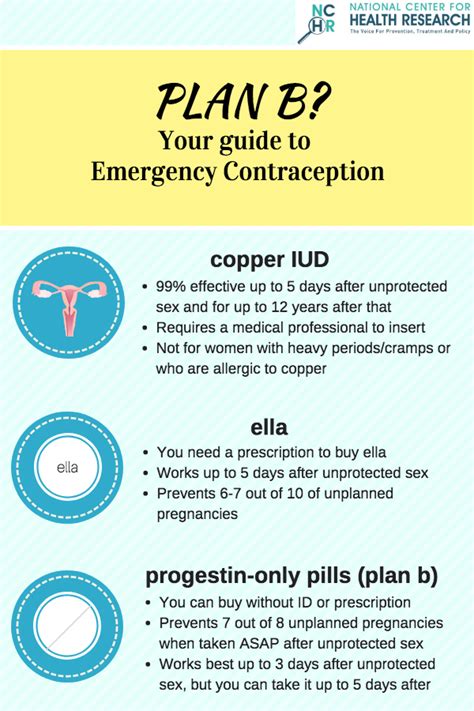Intro
Learn about Day After Pill Emergency Contraception, a safe and effective morning after pill for preventing unwanted pregnancy, using levonorgestrel or ulipristal acetate, and understand its benefits, side effects, and usage as a backup birth control method.
The day after pill, also known as emergency contraception, has become a widely discussed and debated topic in recent years. With the increasing awareness of reproductive health and the importance of safe sex practices, it's essential to understand the role of emergency contraception in preventing unintended pregnancies. The day after pill is a type of birth control that can be used after unprotected sex or when other forms of contraception have failed, providing a safety net for individuals who want to prevent pregnancy. In this article, we will delve into the world of emergency contraception, exploring its benefits, working mechanisms, and steps to access it.
The importance of emergency contraception cannot be overstated, as it provides a second chance for individuals to prevent pregnancy after unprotected sex. According to the World Health Organization (WHO), approximately 40% of pregnancies worldwide are unintended, highlighting the need for effective and accessible emergency contraception. The day after pill has been shown to be highly effective in preventing pregnancy when used correctly, with some studies suggesting that it can reduce the risk of pregnancy by up to 89%. This has significant implications for individuals who may not have access to regular birth control methods or who may have experienced contraceptive failure.
As we explore the topic of emergency contraception, it's essential to understand the different types of day after pills available. There are several options, including Plan B, Ella, and Next Choice, each with its unique characteristics and effectiveness. Plan B, for example, is a popular choice that contains the hormone levonorgestrel, which helps to prevent ovulation and fertilization. Ella, on the other hand, contains the hormone ulipristal acetate, which works by delaying ovulation and preventing fertilization. Understanding the differences between these options can help individuals make informed decisions about their reproductive health.
How Emergency Contraception Works

Emergency contraception works by preventing or delaying ovulation, thereby reducing the likelihood of fertilization. The day after pill contains hormones that help to thicken the cervical mucus, making it more difficult for sperm to reach the egg. In addition, the hormones in emergency contraception can also help to prevent implantation of a fertilized egg in the uterus. This multi-faceted approach provides a high level of protection against pregnancy, making it an essential tool for individuals who want to take control of their reproductive health.
Benefits of Emergency Contraception
The benefits of emergency contraception are numerous, ranging from its high effectiveness in preventing pregnancy to its convenience and accessibility. Some of the key benefits include: * High effectiveness: Emergency contraception can reduce the risk of pregnancy by up to 89% when used correctly. * Convenience: The day after pill can be used after unprotected sex or when other forms of contraception have failed, providing a safety net for individuals who want to prevent pregnancy. * Accessibility: Emergency contraception is widely available over-the-counter, making it easily accessible to individuals who need it. * No prescription required: In many countries, emergency contraception is available without a prescription, reducing barriers to access.Types of Emergency Contraception

There are several types of emergency contraception available, each with its unique characteristics and effectiveness. Some of the most common types include:
- Plan B: Contains the hormone levonorgestrel, which helps to prevent ovulation and fertilization.
- Ella: Contains the hormone ulipristal acetate, which works by delaying ovulation and preventing fertilization.
- Next Choice: Contains the hormone levonorgestrel, which helps to prevent ovulation and fertilization.
- Copper IUD: A non-hormonal option that can be used as emergency contraception, which works by preventing implantation of a fertilized egg in the uterus.
Steps to Access Emergency Contraception
Accessing emergency contraception is relatively straightforward, with several options available. Some of the steps to access emergency contraception include: 1. Visiting a pharmacy or healthcare provider: Emergency contraception is widely available over-the-counter, making it easily accessible to individuals who need it. 2. Checking with a healthcare provider: Individuals can check with their healthcare provider to see if they have emergency contraception available or can provide a prescription. 3. Using online resources: There are several online resources available that can help individuals find emergency contraception, including websites and hotlines.Common Misconceptions About Emergency Contraception

There are several common misconceptions about emergency contraception that can create barriers to access. Some of the most common misconceptions include:
- Emergency contraception is an abortion pill: This is not true, as emergency contraception works by preventing or delaying ovulation, rather than terminating a pregnancy.
- Emergency contraception is only for young people: This is not true, as emergency contraception is available to individuals of all ages who need it.
- Emergency contraception is not effective: This is not true, as emergency contraception has been shown to be highly effective in preventing pregnancy when used correctly.
Future Directions for Emergency Contraception
As we look to the future, it's essential to consider the potential directions for emergency contraception. Some of the potential future directions include: * Increased accessibility: Efforts to increase accessibility to emergency contraception, including online availability and expanded pharmacy access. * New products: The development of new emergency contraception products, including non-hormonal options and products with improved effectiveness. * Education and awareness: Increased education and awareness about emergency contraception, including its benefits and how to use it correctly.Practical Examples of Emergency Contraception

There are several practical examples of emergency contraception in action. Some of the most common examples include:
- Unprotected sex: Emergency contraception can be used after unprotected sex to prevent pregnancy.
- Condom failure: Emergency contraception can be used if a condom breaks or slips off during sex.
- Missed pill: Emergency contraception can be used if an individual misses a birth control pill or forgets to take it.
Statistical Data on Emergency Contraception
There are several statistical data points that highlight the importance of emergency contraception. Some of the most notable data points include: * 40% of pregnancies worldwide are unintended, highlighting the need for effective and accessible emergency contraception. * Emergency contraception can reduce the risk of pregnancy by up to 89% when used correctly. * Over 1 million women in the United States use emergency contraception each year, demonstrating its widespread use and acceptance.Conclusion and Next Steps

As we conclude our exploration of emergency contraception, it's essential to consider the next steps. Some of the key takeaways include:
- Emergency contraception is a highly effective and accessible tool for preventing pregnancy.
- There are several types of emergency contraception available, each with its unique characteristics and effectiveness.
- Increased education and awareness about emergency contraception are essential for reducing barriers to access and improving reproductive health outcomes.
We invite you to share your thoughts and experiences with emergency contraception in the comments below. Have you used emergency contraception in the past? What were your experiences like? Do you have any questions or concerns about emergency contraception? Share your story and help us create a community of individuals who are passionate about reproductive health and wellness.
What is emergency contraception?
+Emergency contraception, also known as the day after pill, is a type of birth control that can be used after unprotected sex or when other forms of contraception have failed.
How effective is emergency contraception?
+Emergency contraception can reduce the risk of pregnancy by up to 89% when used correctly.
What are the different types of emergency contraception?
+There are several types of emergency contraception available, including Plan B, Ella, and Next Choice, each with its unique characteristics and effectiveness.
